The hazard of living in new places is that, as soon as you step out your door, you see something fascinating. Here, I live atop a volcano that last erupted about 2,000 years ago, so all manner of exciting lava features are present. We have lots of time to explore the lava: we live 18 miles from the nearest civilization, and have no cell service or wifi, so our spare time consists mainly of reading, watching movies, and hiking. (Rough life, eh?)
A couple weeks ago, some of the rangers and I decided to go for a short hike up one of the cinder cones. While we were only out for a couple hours, we saw a huge variety of interesting things.
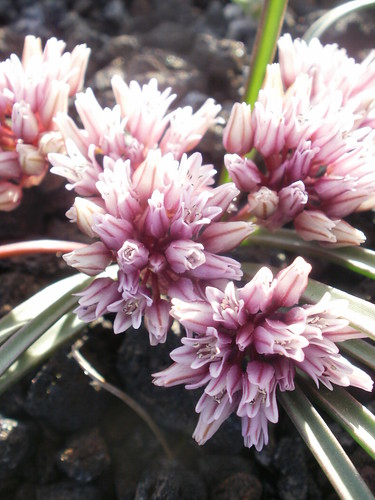
Wild alium (or onion) grows frequently on the sides of the cinder cones, and was just beginning to bloom. Native Americans used to use the bulbs in soup.
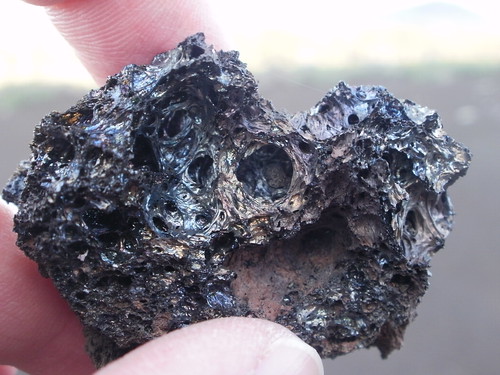
Many of the cinders here exhibit an iridescent, glassy sheen oddly reminiscent of an oil slick. (This iridescence shows up quite poorly in photographs, but is gorgeous in person.) I haven’t yet heard a satisfying explanation of how this happens, but I’m exploring it.

This is a ribbon bomb – the result of a small piece of lava stretching out and cooling as it flew through the air. This one seems to have twisted a little as it flew, resulting in this curled shape. This was the first time I’ve found bombs in the wild, so I stopped to examine every single one.
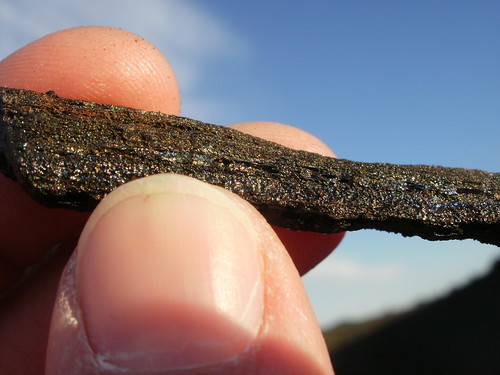
This is an iridescent ribbon bomb, which was quite exciting to find. Best of both worlds!
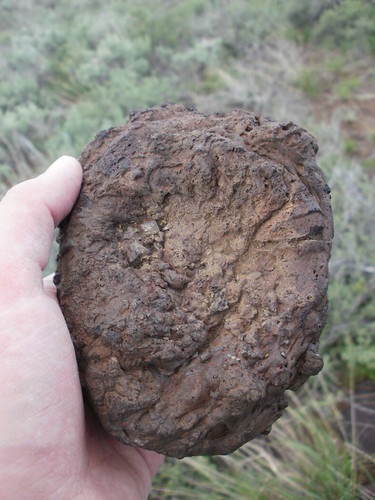
This is a type of volcanic bomb called a cow-pie bomb. They’re the result of a glob of erupted lava that began cooling, but was still partially liquid when it hit the ground, resulting in a squished appearance that exactly mimics that of a cow-pie.

When I first saw these cow-pie bombs, I thought “Oh, best not put my foot in that,” and advised my companions of the hazard.
Whereupon, one of the more experienced rangers reminded me that there are no cows in the National Monument.
We’re not in rangeland anymore, Toto.
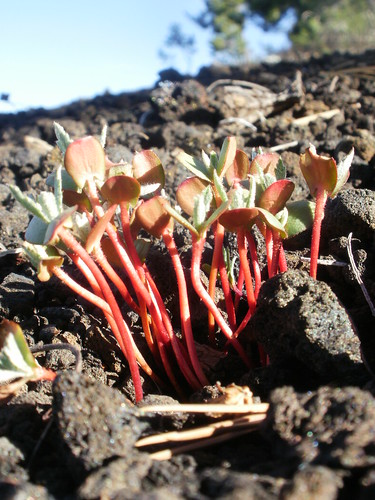
This is some bitterroot just beginning to grow. Bitterroot has gorgeous white or pink flowers, which are usually between 1 and 2.5 inches across – a little larger than the plant is tall. The roots were used as a food by the Native Americans: the bitter taste disappears when boiled. These are some of my favorite flowers, so I’m quite looking forward to when they bloom.
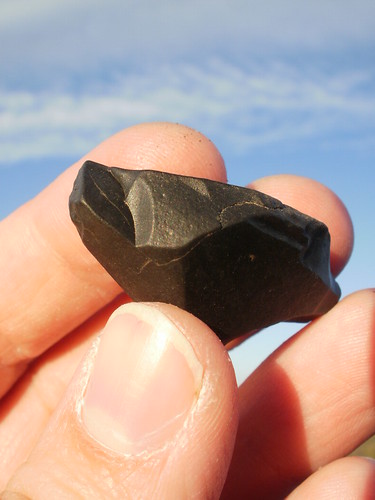
We found a few chunks of tachylite, a type of volcanic glass that forms when lava cools very quickly, without having time to crystalize at all. This is like obsidian, but basaltic instead of rhyolitic. They’ve found a couple arrowheads made of tachylite here, but most of the arrowheads found here are obsidian from nearby Big Southern Butte, or from an obsidian bed in Utah.
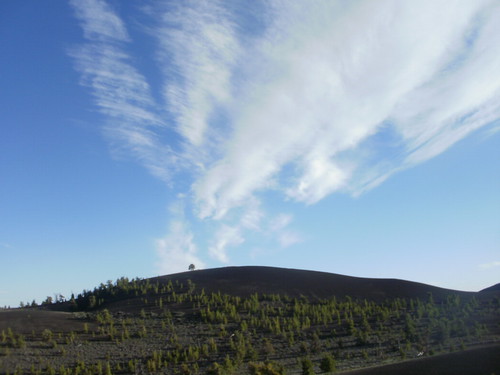
One of the best parts of climbing up the cinder cones is the great view that one gets of the other nearby cones. This one is Inferno Cone, which actually has a short, steep trail up one side for visitors to climb up. Learning the names to so many cinder cones was a little tough at first, but this one is really easy to recognize this one because it’s entirely black, with a lone tree on top.
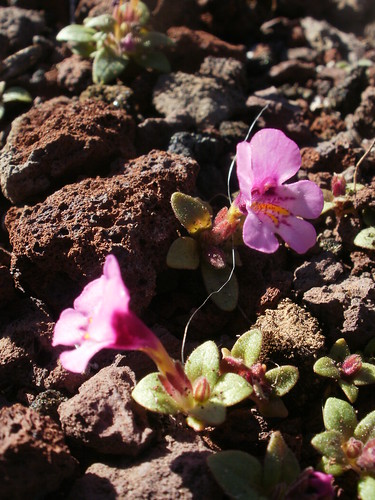
This is a dwarf monkeyflower, and it’s the another pink flower that favors cinders. These flowers are quite small – between a half inch to an inch. These flowers are growing mainly on the loess that has settled down amidst the cinders, rather than any homegrown soil – not enough time has passed for much of this lava to break down into soil.
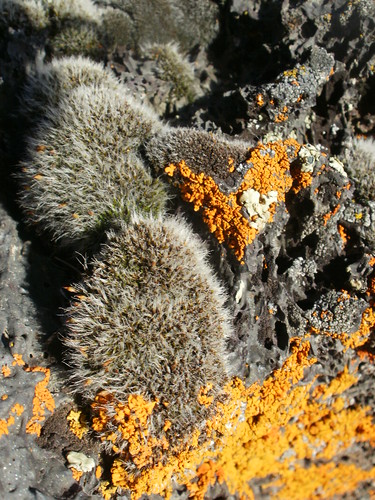
Any home-grown soil that is found here owes much of its existence to lichen. We found many delightful varieties of lichen on this hike, in just about every color, including this fuzzy gray one. This lichen actually turns green if you pour water on it – definitely a fun trick. Lichens are a symbiotic relationship between a fungi and a lichen, and they are some of the first organisms to live in lava fields, breaking down the rock and forming soil for first mosses, then plants and animals, to live in.
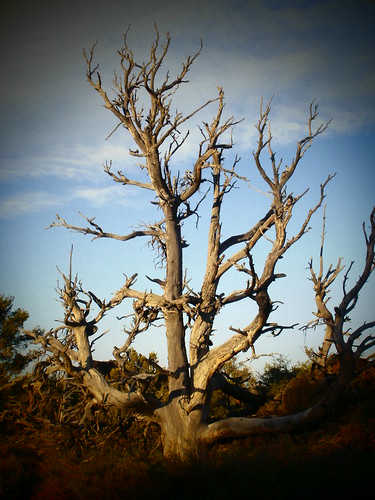
(I also discovered my camera’s filters that day.)
This is a dead Limber Pine tree. These trees are very bendy, in order to cope with the wind, and frequently only have branches on one side. This one may have been killed by Dwarf Mistletoe, a native parasite that attacks the limber pine.
Living where you work can be kind of strange and stressful, but the location entirely makes up for it. When I have time, I really relish getting out of the house, off the beaten path, and into the sunshine – especially since the rocks and plants are fantastic.













2 comments:
Absolutely gorgeous photos. I particularly like the ribbon bomb; I'm not sure I've seen one of those before.
Very nice hike. I too really like the ribbon bombs. Never saw them before. Nice to be able to walk outside your door into such an interesting landscape. Yet it is strange sometimes to live where you work. Seems like you're having a good time.
Post a Comment